The Glorious and Eternal Empire of Juraedon
The Glorious and Eternal Empire of Juraedon covers the entirety of the Uulsan subcontinent and the continent of Erub. It is the largest empire in recorded history. The Empire was built by Magic; it is the binding that holds the Empire's disparate cultures and nations together. The Empire of Juraedon has ruled with a light and fair hand. Its ruled populace enjoy their local laws, and so long as taxes are paid, the Church adhered to, and the core Imperial edicts and laws followed, the armies of the Empire have no need for violent enforcement. But there is trouble afoot. Even a little taken is too much, and there are murmurs of rebellion against the Empire. No matter. There have been many rebellions in the past, and they have always been quashed.
Structure
The Empire of Juraedon is, due to its great size, decentralized as much as it can be while still constituting a state, but the structure of the Empire is simple. If one doesn't want to read the entire article, the organization of the empire goes as such:
- Emperor
- Parliament
- Nation/Country
- Province
- Territories
- Special Administrative Regions
- Directly Controlled Municipalities
The Emperor
The Emperor reigns from above. Currently, the laws are set so that only the line of the first son is passed down the Emperorship, that is, cadet branches are ineligible for Emperorship. If the current Emperor dies and there is no eligible heir, then Parliament will vote in the next Emperor. Inheritance laws may change according to the current political clime; they have changed many times, before. The previous Imperial line, the House Trechik, went extinct thirty years ago, and the current Emperor, Aelmourne, was voted in given he integrated into the Empire the eastern lands of which he was ruler.
The Emperor can introduce legislation, veto laws, and command armies. These powers vary in intensity according to the Emperor's capabilities, but they cannot be removed from the Imperial Person. They are God-given rights to the Emperor.
Parliament
Below the Emperor in importance and power is the parliament. While the Empire has done away with the old dual consulship system, the Empire still has a parliament managed by the nobility and by career politicians. Most legislative decisions must pass through Parliament before they can be implemented. The Emperor is nominally part of Parliament and is titled the Premier Legislate. But despite the Emperor's prestigious position in Parliament, the Emperor and Parliament are often set against each other. Between the Emperor and Parliament is a war for political acumen. This war rises to extreme intensities whenever a new Emperor is coronated. Because of the Emperor's great central power, Parliament, if not politically unified by the time of an Emperor's coronation, may become all but ceremonial during that Emperor's reign. At the same time, if they play the political game well, Parliament may make that upcoming Emperor a purely nominal power.
This system is one that creates many conflicts between the Emperor and Parliament, and much of the political conflict in the capital is derived from these twos' battles. Parliament has often wielded more power than the Emperor; the Emperor has often wielded more power than Parliament. It is anyone's game.
The Courts
There is little to be said about the High Courts of Juraedon besides that they deal with all things related to jurisprudence. There are twelve high judges, and they deal with meta-laws and imperial level cases. These judges are stationed for life and are only set by the Emperor.
There must always be twelve judges.
Regions of Juraedon
Organised under Parliament and the Emperor are the varied Nations, Territories, Special Administrative Regions, and Directly Controlled Municipalities of the Empire. Due to the size of the Empire, many of these nations and territories are effectively autonomously run by the locals with little direct input from the imperial government. Even Magic, powerful as it is, can only do so much to shorten the leagues between the imperial heartland and its dependencies.
These Nations, Territories, S.A.R.'s, and Directly Controlled Municipalities are listed below. Some of the nations listed could be considered empires in their own right, considering their sizes, populations, and demographics. These nations are listed as Hodsian Nations. Certain nations or regions are directly managed by the imperial government — these are listed as Directly Managed. All regions are written in their Common form.
Of territories all that will be mentioned are those in the Relics of Boryen. There are too many small and inconsequential territories spread throughout Juraedon to be listed here.
Nations
- Juraedon Proper | Directly Manged
- Kingdom of Seinis in Greater Huraedon | Hodsian Nation
- Kingdom of Alk'kir | Hodsian Nation
- The Hile Dwarf Lands
- Lower Huraedon | Hodsian nation
- Genesami
- Florental
- Pavlodigi
- Aktobe
- Ferrat
- Frankonia
- Frankwatt
- Leftland
- Carrara
- Lower Ponche-Yer
- Upper Ponche-Yer
- Cheeheuv-Yed
- Nenet-Yed
- Yakughst
- Kharadzhi
- Swabby
- Greater Soxan
- Lesser Soxan
Territories
- Black King's Hoard | Directly Managed
- The Isle of Wishes | Directly Managed
- Island of Soxan | Directly Manged
Special Administrative Regions
- Quen
- Larppir
- Uulsan Torall
- Uendale
- Volk
Directly Controlled Municipalities
- The City of Juraedon
- Archine
- Ailunid
- Anudaen
Citizenship
The Empire of Juraedon has guaranteed the rights of its denizens through the Imperial Citizenship. The Citizenship is magically burned onto your left hand immediately after one's Ablution, a few weeks after birth. It is an entirely painless affair and, by its symbols and design, will tell where you were born, your status of birth, your status as a citizen, and any special modifiers to your rights as a person (e.g. a prisoner will have a different mark indicating the lack of the right to buy property in his home province).
All freemen are liable to citizenship, which should technically mean everyone, as the Church has outlawed outright slavery. The citizenship grants rights to commerce, rights to the purchase of property, the right to retain your rights even when moving throughout the empire, the right to lawful marriage, the right to sue in local courts and, if those courts are willing, to bring the case to higher courts.
A Unified State and Religion
The Empire of Juraedon has a professed imperial religion: Qallanism, which has been the official faith of Erub and Aran since the conquests of Hod the Great. The power of the state lays behind with the Church, Uendale has been rightfully returned to the Patriarch, and many regions of the world once thought impenetrable have been opened up to missionary and Church work.
A unified state means the rebuilding of roads, the reinstatement of old centers of learning, and the funding of the arts. The Empire of Juraedon is in a Golden Age. Travel is safer than ever, the monstrous creatures have either been pacified or defeated or bargained with, the intellectuals flourish as do many of the common folk. Wonders never before seen, architectures once thought impossible, now appear regularly under the jurisdiction of the Empire. It is, quite literally, a magical time. Perhaps this is the best time to be alive in recent history. At long last, the known world is at relative peace.
Troubles on the Horizon
Nevertheless, the Empire grows decadent. Corruption grows ever more present. Pedigree, recommendations, and wealth will guarantee one's position, and ability becomes less valuable.
The existence of Magic has facilitated communication and so has, with good reforms, curtailed much of the possible corruption that would have been rife in Juraedon. Nevertheless, the empire is too large, and the system too old. Even more worrisome is that the proportion of Wizards has declined over the centuries and, with a growing population, the management of the empire has grown even more difficult.
Lower Huraedon
The most obvious sign of internal hurts is the constant war in Lower Huraedon. There was, initially, an uneasy peace between the hundreds of princes in the region at the beginning of Juraedon's rule. It was hoped that the assigned Grand Vicar would be able to, in time, integrate all the princes into one, unified province. But the policies of unification failed. Constant warfare dominates the land.
Kingdom of Seinis
The Kingdom of Seinis has always been a centralized state. It alone, among all the other great countries, has been able to keep its bureaucrats relatively honorable. But the Kingdom is slowly distancing itself from the central imperial authority. Its nobles are enclosing themselves within their castles and begin their schemes for petty and personal power. Furthermore, House Cour de Lione remains a staunch opponent of reforms in Seinis as pushed by the imperial legislates, and with the power of the Empress behind the Major House, it does not seem that reform is coming any time soon to Seinis. If these reforms do not pass, then the exit of Seinis from the greater imperial polity becomes more likely. And with the exit of Seinis there comes a good chance for total collapse of the imperial infrastructure.
Kingdom of Alk'kir
Alk'kir remains a splintered country. Its riches lie along the Mendesian River, and luxury crops are its greatest export. But the vast majority of its territory lies over a desert. The cities not along the Mendesian clamor for independence; and the magical interference of the great upturned pyramids halts any easy communication across the country. Large criminal organisations are rife in Alk'kir, and draw away much of the region's wealth.
Juraedon Proper
Juraedon Proper is, among the big three countries, the least populous, wealthy, and generally productive of the three. The many hills and high mountains do not make for fertile land. But there are large glass and paper manufactories that you can find, here. Juraedon Proper's importance is mostly political. It is the political heartland of the Empire and is also home to a great many nobles and merchants — all of whom control vast hoards of gold and many mercenary regiments.
Stagnation and Enemies Everywhere
Innovation of the education process has become stagnant, and professorial politics ruin many schools. High paying nobles flood the schools with sub-par children, meant to be tucked away in a monastery somewhere. Only the University of Tang Yu avoids this fate, what with the imperial declaration of private institution.
Kilae and her people also lie to the south. They are a much less wealthy, but a much more tightly organized, empire. They are Juraedon's steadfast allies and friends. Surely they wouldn't attack us, all of a sudden?
Emperor Aelmourne does what he can, but it is not enough. If he hadn't ruled there would be no War in the East, and possibly the Empire would be able to internally devote more resources. But he is also a strong ruler and has kept the peace where other, lesser, men could not have.
The Church supports the Emperor, and though it has done much good, it also sit upon the greatest hoard ever collected in history. An accrued collection from tithes and the expensive magical services to the commoners which only they could provide has created kings of a once ascetic institution. The priests do not keep their vows of chastity, and they make the gods out to be like the pagan gods — they encourage worship of the twelve Seats! Blasphemy of the most terrible order. Reforms must be had. Everyone can see the Church's riches, her lands, and her fat clerics. Soon there will be a revolt by the commoners, or the nobility will decide that greed supercedes piety, and forcibly take the Church's land.
The Empire is beset by dangers on all sides. Is there hope for the future?

The War in the East
To the east is the bloodiest war in Juraedon's history. It is a fervourous war, and morale is still high. The Kingdom of Seinis has sent the largest amount of men — many of proud knights. Juraedon Proper has sent the second most amount. The Imperial Hosts of Juraedon still do the most of the work. But now the entire Empire is beginning to feel the sting of a lack of manpower. Trade from the east is beginning to lack, and a short famine occurred in the northern mountain provinces. Surely the Naharaim cannot go on for much longer? How long will their fervour last?
Reasons for War
The war against the Near-eastern Elves is because of two reasons. The first reason is religious. The holy city of Volk is in the Occupied Territories, and the Church issued a crusade against the Elves to retake it. The religious aspect united many countries within the Empire and allows Juraedon to levy many soldiers and bring them to one front. Everyone is fervourous to save the holy land.
Second is territorial. The Emperor Aelmourne had conquered Uulsan Torall during his earlier years as a barbarian ruler. The Naharaim did not contest his conquests at the time. Later on, the Empire of Juraedon invited Aelmourne to the Emperorship. The nobles of Juraedon thought to integrate the eastern plains and hills and their nomadic peoples. Aelmourne accepted the offer. And so the Naharaim Elves declared war soon after. Their territory was becoming integrated by an empire — an institution which may outlive many human lives. They could not stand the affront.
The war started as many small skirmishes. Now it has escalated into all-out war on the eastern front.
Languages
The language of the Empire is a pidgin variant of the Tetian language. It has been renamed the national language, or the Common Tongue.
The majority of the names in this article are anglicanised (e.g. Florental is called in the local tongue Fla Dahê).
Most languages across the world are character or runic based scripts. The Elves were the first to invent writing; and they used characters and runes. The race of Man learned from the Elves. And the Dwarrow publicly use runic carvings, which are largely of the Elvish script.
Uman was the language of the Nelqorana and is an alphabetical language. A heavily altered form is used today. Uman was chosen as the official language of the Empire because of its ubiquity in many of the trade tongues of Erub.
Common, Tetian, Uman: these all mean the same language today, though Uman is technically a dead tongue. It is the official colloquial language of the Empire of Juaredon, though as of the present times few among the tens of millions of Juraedon speak it fluently. But the official language of imperial business, the high legal courts, academia, and the Church is Den Hûr, which is the language of Mother Huraedon.
The Imperial Mantle
The Empire of Juraedon is one of the Three Great Empires. These three were, in order of age, Nelqora, Mother Huraedon, and Juraedon itself. These empires all had great amounts of territory in Erub, had a large cultural impact on the states therein, and provided a peaceful stage for the people who lived within their borders.
The Empire of Juraedon, unlike past dominions, did not take the Imperial Mantle of Huraedon as a sign of legitimacy, but rather that of Nelqora. Juraedon was founded by the Nelqorana, and her people are similar to the Nelqorana in kinship and blood. It was only sensible for the Empire to claim the mantle of that state most close to her.
History
The Empire of Juraedon was once a small city-state called Jelum. And for the sake of clarity, Jelum will be referred to as Juraedon in this article. The City of Juraedon was founded in 1370 Year of Nelqora, according to Nelqorana glass paper records. The city was called Jelum, after the reigning dynasty of Nelqora at the time. It was a small fishing village that was expected to grow into an important future colony, due to its position on the Beart Promontory and the Isthmus of Juraedon, which had not yet been divided into the Elsmere Strait and the Juraedon Canal. For many decades, the colony was relatively unknown and unimportant, despite these initial high expectations. The Elves of the East had begun to recover from the Wars of Hate, and Nelqorana expansion into Tizüb was relegated mostly to the northern shores, clinging to the sterile Yellow Ash Plains and the Altaic Country, although their western colonies were expansive and powerful.
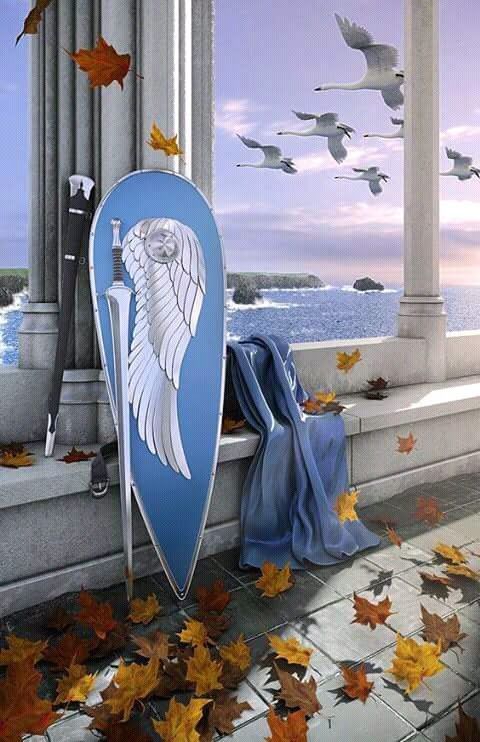
As Nelqora expanded her colonies and grew in military might, finally founding many colonies in Tizüb, Juraedon grew to greater importance as a city that could bridge the continents. Juraedon's sister city, Anudaen, was built at this time. There were plans for excavation to begin the delving of the Canal of Juraedon through the Isthmus of Juraedon, but these plans were halted due to lack of funding. A little progress had been made, though. The Magics of the Nelqorana were greater than the ones we control today, and the canal they had begun to build had the appearance of a natural strait and a natural breakage of the continents. Thereafter, this unfinished canal was called the Elsmere Strait, and it laid the foundations of the later Canal of Juraedon. The Elsmere Strait is about three times wider than the Canal, and twice as deep.
So Juraedon grew, and it became a city nearly as prominent as the colonial jewel of the Nelqorana: the City of Lille. Though Juraedon was an important trade city, there was not much effort done into cultivating the vast boreal forests around the city walls, and the soil was quite poor, a far cry from the wealth of the Great Plains in Greater Huraedon.
Nelqora's Fall
In the 1591 Year of Nelqora, the Mighty Seat of the High Men of the North was crushed underneath the weight of the Folvkin Palace, and the island sunk beneath the waves. Great chaos occurred across the colonies of the Nelqorana, and Juraedon diminished as trade faltered, and petty lords looted and pillaged and stole away the city's wealth. For a long while, the City of Juraedon retreated from her White Walls and her people were relegated to the central districts. For a long while, the city only had the population to man the inner Walls of Blachernae. It was under the leadership of the Elf, Wilahil, that the city of Juraedon was brought back from the brink of destruction, and the city rebounded, stabilized, and established the dual consul system in 1666 Year of Nelqora. Because of Wilahil, Juraedon has always had a special love towards the Elven folk, and has treated them well. The most famous of Wilahil's accomplishments was outlining the General Rules of, and the founding of, the Hosts of Juraedon — an elite fighting force dedicated to the protection of the city-state. It was their fearsome reputation that halted Hod the Great's absolute conquest of the city. And it was their legacy that allowed Juraedon to grow into the empire it is today.
Though Juraedon was still less prosperous than during the time of the Nelqorana, it survived and prospered somewhat as a city of trade. It was at this time that the city-states of Eastern Lower Huraedon grew in prominence, and drew much of the lucrative trade of the East. Ships skirted the southern currents of the Archine Sea and landed at southern cities such as Quen. So Juraedon entered a period of general unimportance. But in the years thereafter the City of Juraedon grew populous enough to be able to man her White Walls, although most lands within them were still devoted to farmland.
Hod's Conquests
The conquests of Hod the Great began in 1801 Year of Nelqora and ended in 1842 Year of Nelqora. Hod's empire spanned from the Revon Basin to the River Pentos, and was bounded by the Western Mountains and the Mendesian River to the west. The Years of Hod were instituted, the Empire of Mother Huraedon was founded, and on 5 Year of Hod the mighty and newly crowned Emperor Hod brought his armies upon the various states of Juraedon Proper and brought them to heel. The City of Juraedon eventually aligned itself with Hod, and was forced to pay tribute, although it retained some independence.
But these conquests proved fruitful for Juraedon. The many city-states of Eastern Lower Huraedon were destroyed and razed, and trade began to more often travel through her. The means to build a canal were still out of reach, but the trade winds were favorable in bringing western ships to Juraedon's ports, and so the city grew. Perhaps most importantly, these conquests allowed the spread of knowledge of the broader world, and this was when Juraedon first learned of the jungle city-state of Kilae, and a great friendship was struck. Perhaps the two united because they saw in each other a kindred weakness. Kilae, at that point, was the greater of the two city-states, but great profit was made from their long-distance alliance.
The incremental growths continued, and Juraedon began to urbanize. It was still a relatively unimportant city in the vast territories of Mother Huraedon.
The Decline of Mother Huraedon
The Empire of Mother Huraedon began its decline after the death of Hod's son, Gavan the Builder, and territories were quickly lost to either warlords or to rebellions by locals. Mother Huraedon ended as a coherent state about a century after Hod the Great's death. But the mantle and name of Mother Huraedon remained long after, being passed on between the strongest states in Lower Huraedon in a constant give and take of skirmishes and wars. The last state to claim the name 'Mother Huraedon', the city-state of Dodorion, was conquered by the warlord Tenga in 892 Year of Hod.
Now, Juraedon was long a tributary of Hod's empire, and its death marked the end of a prosperous age. During the years of Mother Huraedon's decline, the great city-states of Eastern Lower Huraedon began to restore themselves, and the city of Quen renamed itself Thalassokratia, City of Sea Power, to embody the great might of itself and its fellow city-states. Juraedon shrank once again as people emigrated for warmer lands, and it seemed that the progress of the past years was all for not.
The following centuries after Hod's death were times of strife. The importance of Juraedon diminished even further during these years, although Kilae grew in importance as the states of the eastern coast of Aran prospered. This was a time of feudal states, and the most powerful of these was Aleriez, the Kingdom of the Great Plains, with its capital in Pert. Second most prominent of these kingdoms was the Dwarrow Kingdom of Das Eklachen, located under the Mountains of Das Eklachen, which was a kindred kingdom with the Dwarf Kingdom of Das Belchara, which was located under the Western Mountains.
It was trade with the Dwarrow of Das Eklachen that ensured Juraedon's survival. It was the incoming fur trade dealt in by brave Jelunese merchants who dared to face the Altaic Country that gave Juraedon the strength to maintain its city in the bitter north. But tragedy struck when the dragon Gaorung overthrew the Kingdom of Das Eklachen, and the VolKernen and EkLachen fled their ancestral homes. They either went to find refuge in their sister kingdom of Das Belchara, or to hide in the caves of the Mountains of Das EkLachen. Juraedon came to the brink of dissolution. The city-state of Kilae grew in importance and founded its own feudal state, composed of all the Isthmus of Isim. Perhaps it was Kilae's friendship that kept Juraedon's place in the world afloat.
The Blood Wars and Magic
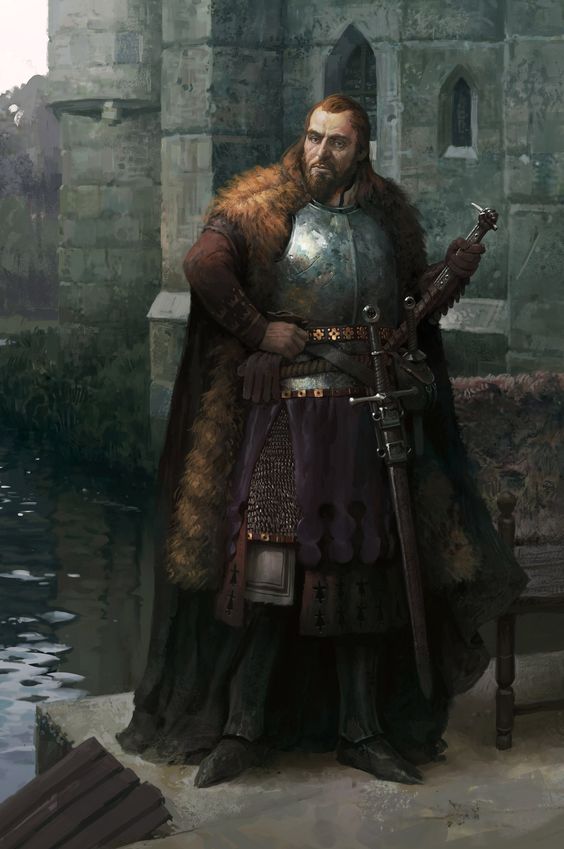
It was the advent of the Blood Wars in 689 Year of Huraedon that brought Juraedon to the position it is today. As the world flung itself into chaos, the city boomed.
With war comes a need for weapons, and weapons must be traded for if desired en-masse. Merchants, seeing the gold to be made, went to the kingdoms of the east and procured the weapons required. Juraedon was quick to act, and with its safe position in the north, far from the fighting, Juraedon became wealthy. At the same time, Kilae had carved for itself a large kingdom across coastal Aran.
The Blood Wars raged on for many decades, and, as the next century came to pass, the wise men of Juraedon discovered a hidden cache of glass paper, the fragile relics of the Nelqorana. Carefully deciphering the rare treasure, the sages of Juraedon uncovered the most monumental of sciences, long thought lost forever: they had discovered the basic principles of Magic, written on tablets meant for school children.
Sages secretly learned the words of Magic and became proto-wizards. The Mayor Lirit foresaw the great things that could be accomplished with Juraedon's discovery and forbade any citizens to leave the city. So Juraedon developed the science of Magic in secret. And though there were many close calls, the secret remained hidden, and the Hosts of Juraedon prepared for war. In a show of incredible trust not known in today's less noble times, the city-state of Juraedon brought proto-wizards to Kilae to teach the southern kingdom of the powers of Magic. And yet, still, the science remained a close secret. If there be any who denies miracles in history, let him witness this occasion.
The Hosts marched from Juraedon's White Walls, and though the states of what is now known as Juraedon Proper fell quickly, the states of Huraedon proved difficult to conquer. Even with magic the fighting was long and ferocious. But, in a decade, Juraedon spanned from the Beart Promontory to the eastern edge of the Mendesian, to the southern reaches of Lower Huraedon, and to the northernmost tip of the newly founded Kingdom of Seinis. To the south, Kilae conquered the kingdoms of Aran's eastern coast and conquered the Peku Mountain Kingdoms. Jelum renamed itself Juraedon, hearkening back to the name of Huraedon. In the next 10 years the Alk'kir kingdoms would fall as well, and Juraedon was confirmed by the Patriarchs of Uendale as Imperial Supreme, rulers of Erub and, by Juraedon's choice, inheritors of the Mantle of Nelqora, her mother country. Emperor Adhonal was the first emperor. He was the son of Mayor Lirit.
So, this is the history of an upstart city-state on the edge of the world. Now it is the head of a great empire. A proverbial story to be honored and admired.
Demography and Population
In terms of population, there are about 168.8 million persons living in the Empire of Juraedon. In terms of total population, in order from most to least: Human, Dwarf, Gnome, Halfling, Elf, Dragonborn, Tiefling, Half-orc, and Half-elf. Not mentioned are the kin of the goblin (e.g. Orcs, Hobgoblins, and Kobolds) as it is difficult to find demographics on these more brutish races. Also not mentioned are what can be considered the monstrous races (e.g. Dragons or the Yuan-ti).
The Primary Races
Elves, Men, and the Dwarrow are what can be called the original kin, and all other races are sub-branches of these original three.
Men
Humans compose a hefty amount of each empire's population. About 75% of Juraedon's population is human. This is 127,900,000 persons in the empire.
Halflings are related to Men — or the Big Folk, as Halflings call them. They are a relaxed people. A Halfling is more content to stay at home than travel along the road, although there are notable exceptions. Certain Halfling families act as coastal guides, others as marsh denizens. Most Halflings live on the green hills and plains of Greenbuck Half, content in their underground homes, happy with the tilled earth. About 4.5% of Juraedon is Halfling, meaning there are about 7,030,000 Halflings in Juraedon.
Dwarrow
Dwarrow are a major minority within the Empire. The Dwarrow, unlike the Elves, have not greatly diminished bodily or politically over the ages, but they do not repopulate as quickly as Men. About 10% of Juraedon's population is Dwarrowish, meaning there are about 16,880,000 Dwarrow in the Empire.
There are many subgroups of the Dwarrow. Dwarrow are often traders and merchants. They have an eye for gold and a heart after music. It is not surprising for travelers to suddenly come across a Dwarf playing a harp on the side of the road, or to find Dwarf managing a shop in some locale far away from the mountains.
As for Gnomes, they are the smaller cousins of the Dwarrow. They have created peculiar kingdoms of their own, often nearby to the older Dwarrowish Halls. Gnomes are wont to wanderlust more than a Dwarf, and you will often find the two races working with, or against, each other on the overworld. Perhaps about 5% of Juraedon is Gnomish, meaning there are 8,440,000 Gnomes in the Empire.
Elves
Elves used to dominate the world, and their people spanned across the continents, but they have since diminished. The Seventh War of Hate signaled the decline of the Western Elves. Elves come in cycles of reincarnation, and they retain their memories from past lives when they come of age. Elves live forever, and can only die from bodily harm or great sorrow. Nearly all Elves today are less than 3000 years old, including their past cycles. The great Elves of the mythic days no longer return to this world, and they wait in the Halls of Morrôs. The weight of time and their history tires the Elvish folk, and increasingly they do not return to the world.
It is rare, now, to see an Elf on the road or in a human-dominated city. Only the youngest of their kin (a very rare thing), that is, those who have newly created souls, will leave the Elvish cities and glades to see what the mortal folk have to offer. Most Elves are content to live in their fading cities, content to, eventually, fade away themselves.
Elves mostly live in Isdoni, either in the Forests of Color or in their mystical cities, which are considered independent nations, and foreigners need apply to enter. There are Elvish tribes in the Alk'kir Desert, though they are also shrinking. Elves have never populated the southern reaches of Erub to a great extent. In the north, the Elves were unduly slaughtered by the Yeqitari and, later, the Nelqorana, and the people there declined into nothing.
About 1% of Juraedon's population is Elvish, meaning that there are about 1,800,000 Elves in the Empire.
The Mixed Races
The mixed races are those that are traditionally considered having come from Marqôd's experiments, having been birthed from the forceful mixing of various races and species.
Dragonborn
Dragonborn are the products of Marqôd's experimentations, meant to be as strong as Dragons while being as easily manipulated as mortals. The Dragonborn themselves have myths of their genesis shrouded in darkness and fear. They do not worship gods, indeed, their entire culture seems to have a fear of them. Dragonborn are denizens of the island called Soxan. It is a tropical paradise, complete with white beaches with soft sand and tall green clouded mountains. The island is populated entirely by Dragonborn, and they have done well for themselves.
Dragonborn are rare to see beyond their tropical island. They are not feared by common folk like the Tiefling is — they are more of a surprise. Dragonborn colored like a Chromatic might invite fearful questions, but a Dragonborn's naturally great height and strength will deter most insults. A metallic colored Dragonborn is often a sign of good luck.
About 3% of Juraedon's population is Dragonborn, this amounts to about 5,060,000 Dragonborn in the Empire. Nearly all of them live in Soxan.
Tieflings
Tieflings are a cursed people and race. In most provinces of the Empires, Tieflings are feared, shopkeepers reject them services, and people are loathe to speak to one. Notably, the Frankonian area — a colonized country and a remarkably tolerant region — has a much larger proportion of Tieflings than in most other imperial countries. A Tiefling comes when a mortal copulates, either forced or willingly, with an infernal being. It is always an extraordinarily painful affair. Succubi or incubi will suck the soul out of their victim. Other infernal beings will literally burn at the touch. The curse of the Tiefling is that all ancestors of the Tiefling have a chance to bear the parent's visage. The appearance may hide for generations, and only come suddenly, revealing the infernal heritage. All Tieflings have ancestry tracing back to a Human.
It is a generally accepted tradition that the Tieflings were supposed to be birthed as frontline warriors in the Wars of Hate, much like the orc or the goblin. Men were captured by enemy Elves, and, with Marqôd overseeing the process, the Tiefling was created: a corporeal being with infernal augmentations.
Marqôd wished to use the Itie'lman Elves as the progenitors of the Tieflings. She believed the Elvish strain to be stronger than Man's. But an Elf cannot be forced upon, or they should immediately die. So Marqôd reluctantly turned to Men.
About 0.25% of Juraedon's population is Tiefling, meaning about 422,000 Tieflings in the Empire. Tieflings have no home or nation. You will find them everywhere with similar probability.
The Happas
Half-orc
Half-elf
About .25% of Juraedon and Kilae's population are Half-orcs and Half-elves. Half-orcs compose a much larger proportion of that number than Half-elves. Conservative estimates believe that about 80% of this proportion are Half-orcs; more liberal estimates put it about 95% of the proportion. About 422,000 persons in the empire are Half-orcs or Half-elves.
The few amount of Half-elves can be explained by the Elvish general impotence and the Elvish lack of a powerful libido. There is also the lacking numbers of Elvish populations, and the general incompatibility between Men and Elves on an emotional and spiritual (or psychological) level. Elves are quite alien to Men. The chasm between them is greater than the chasm between the earth and the stars. Still, there are many more Half-elves today than there ever were in history.
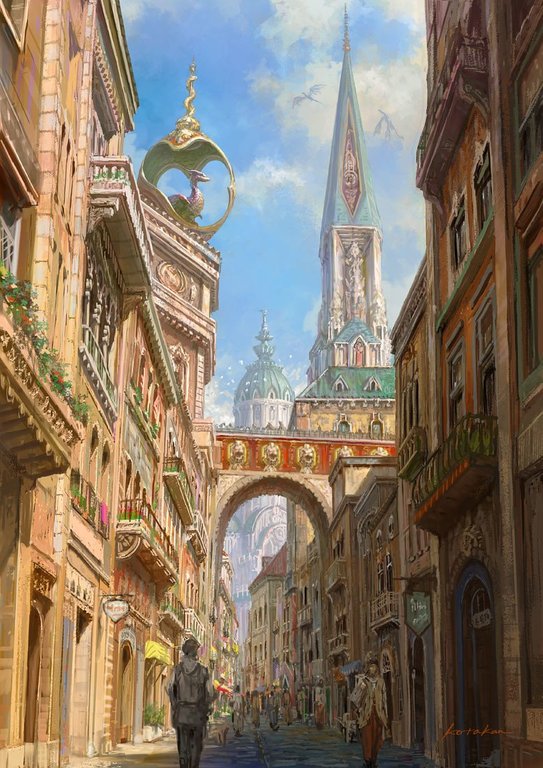
The white walls of Juraedon shall stand ever tall/Never shall they fall!
3 A Unified State and Religion
Maps
-
The Glorious and Eternal Empire of Juraedon
The Northern Empire: its territorial extent has never been matched, even by the peerless Nelqorana.
Juraedon
The Empire
Heirs to Nelqora
| Race | Population % | Absolute Population |
|---|---|---|
| Human | 76% | ~127.9 M |
| Halfling | 4.5% | ~7.03 M |
| Dwarrow | 10% | ~16.88 M |
| Gnome | 5% | ~8.44 M |
| Elf | 1% | ~1.8 M |
| Dragon- born |
3% | ~5.06 M |
| Tiefling | 0.25% | ~422 K |
| Half-orc & Half-elf | 0.25% | ~422 K |
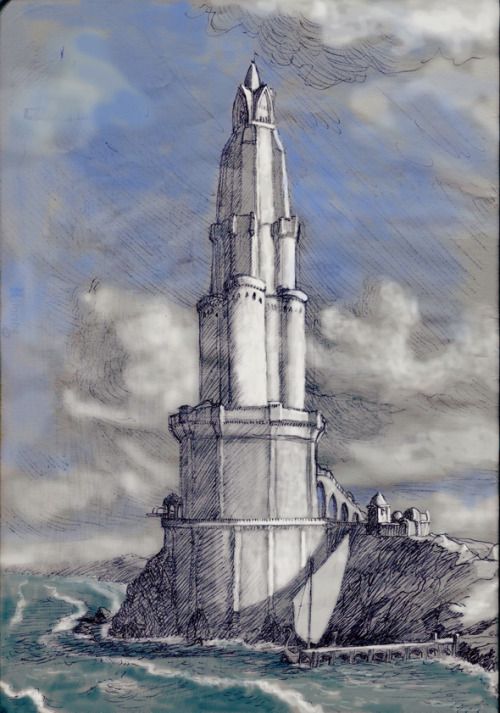
I wake up every day thinking and believing the Empire will go on for a thousand years, but truthfully, I fear it will crack at any moment. The Empire is quite old, and we do not have the skills of our High ancestors . . .

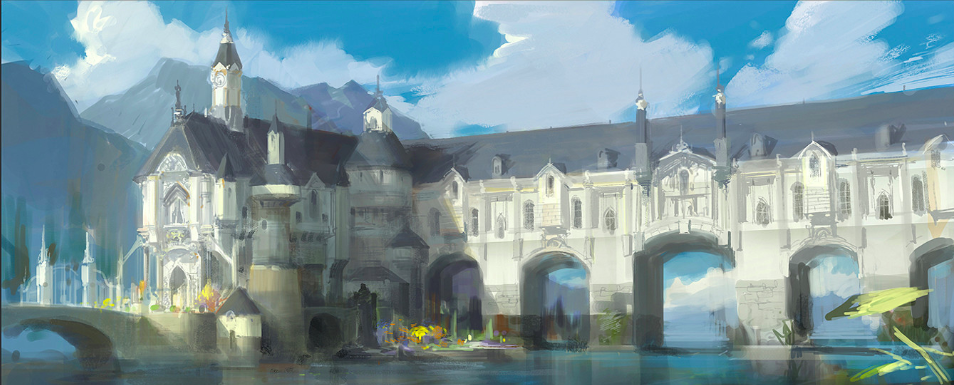
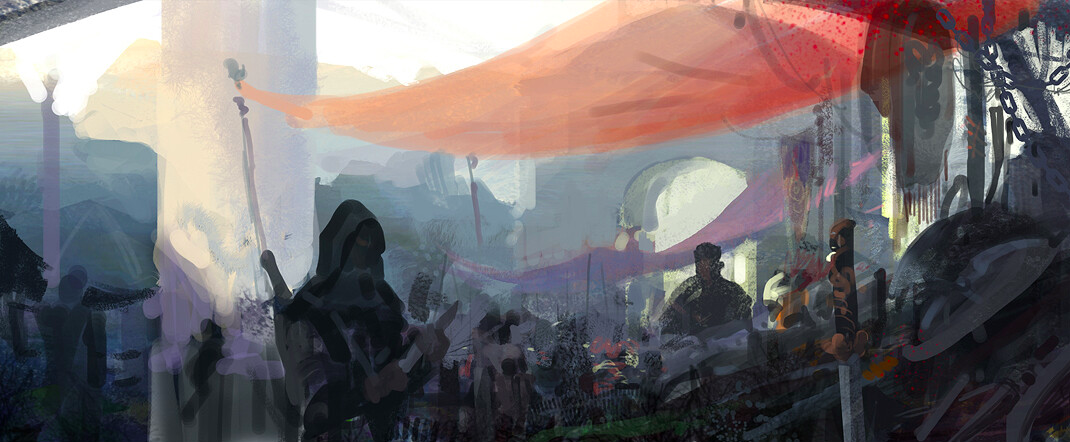
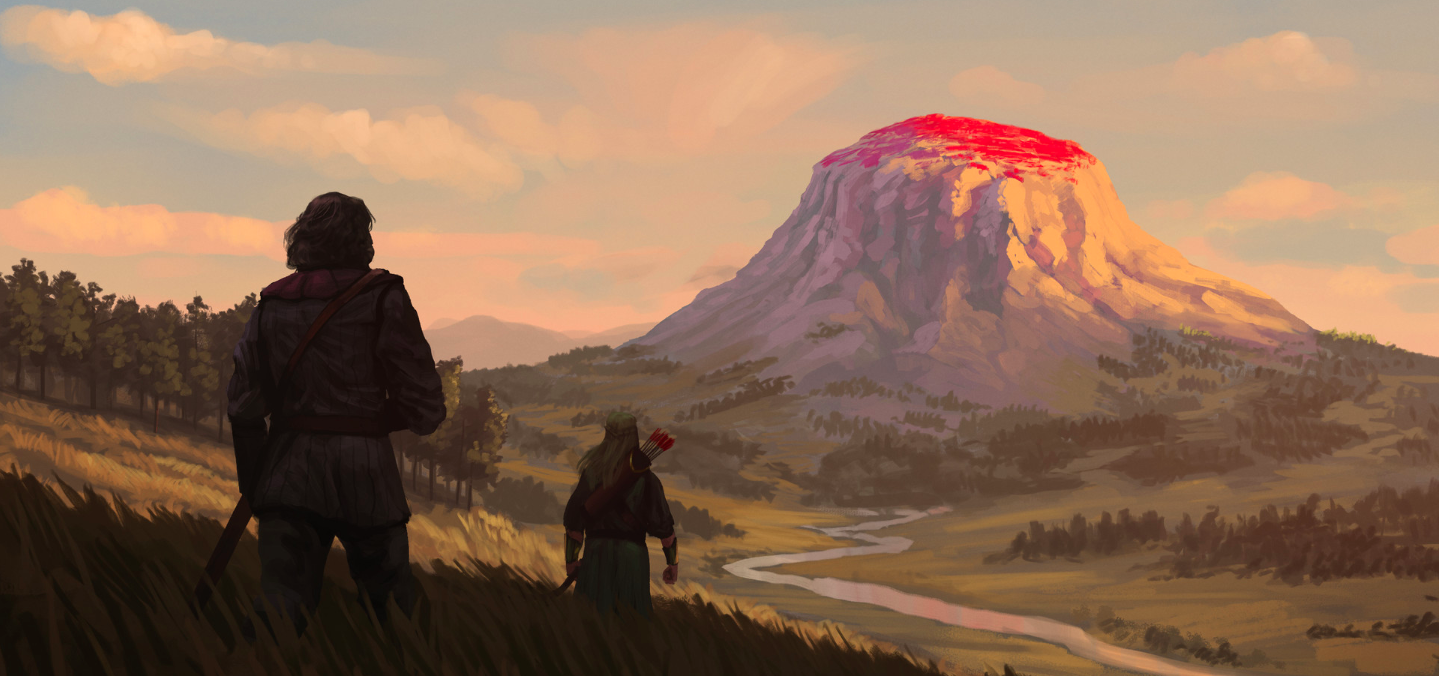
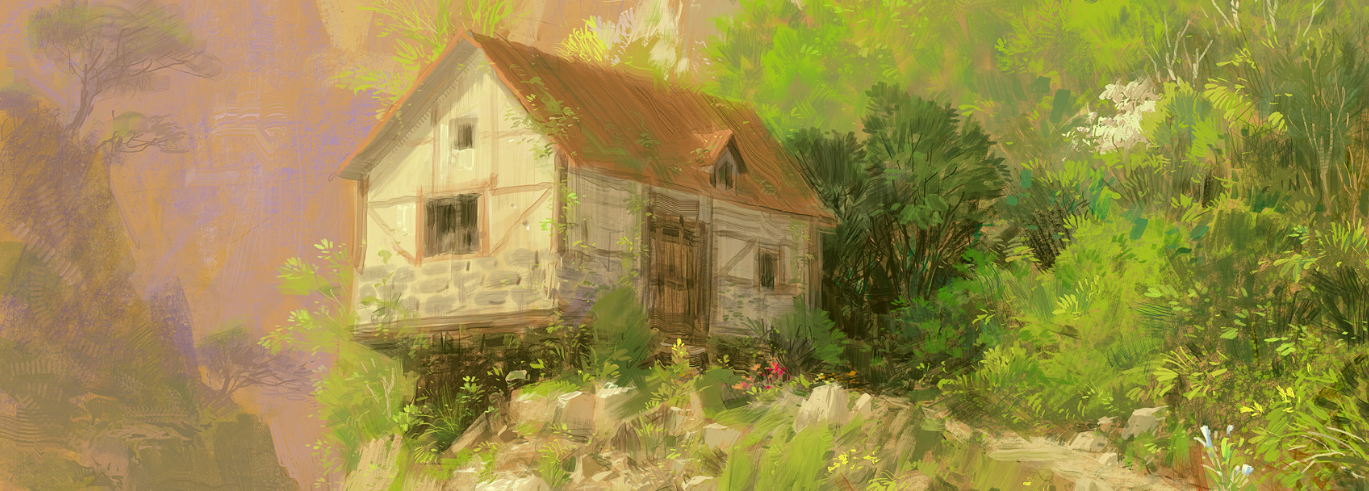
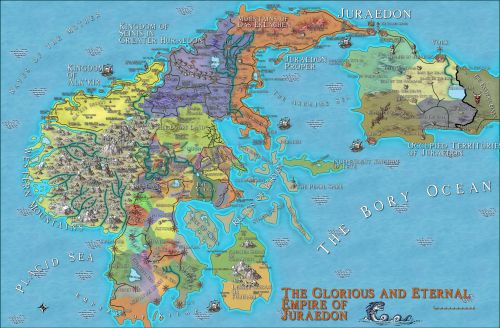
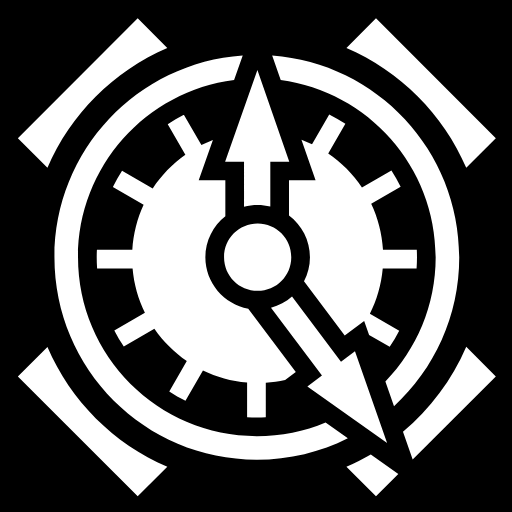
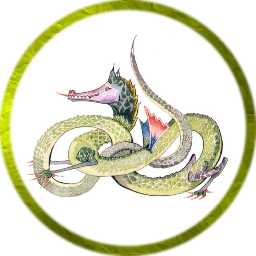
Super detailed and nicely formatted! The whole article as such is easy to read and doesnt strain the eye (or the brain :P) due to said formatting. The richness in details really makes it shine and the timeline complements it very well to round everything up. Good job :)
Thanks, I'm glad that you enjoyed it!